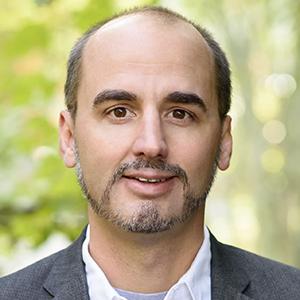Mechanisms of tumor-initiation in B-lymphoid malignancies

Markus Muschen
PhD, MDYale University
Project Term: July 1, 2020 - December 31, 2023
Dr. Müschen studies mechanisms of tumor-initiation in B-cell malignancies, including acute lymphoblastic leukemia, mantle cell lymphoma and diffuse large B-cell lymphoma. These studies focus on negative regulators of the WNT/b-catenin pathway as potential diagnostic marker and therapeutic target.
Mechanisms of tumor-initiation in B-lymphoid malignancies Close to 40,000 patients were expected to die from B-cell tumors in the US in 2020 (SEER). ~45% of these patients account for diseases that are currently incurable, e.g. mantle cell lymphoma, CLL and myeloma. Leukemia-initiating cells (LIC) in myeloid leukemias and cancer stem cells in solid tumors have been identified as the primary driver of drug-resistance and initiating cell of tumor relapse. For this reason, therapeutic approaches to target rare LIC helped improve outcomes by reducing the risk of drug-resistance and relapse and overall toxicity and side-effects. Tumor-initiating cells in B-cell malignancies (B-LIC), however, remained elusive. Identification and functional validation of LIC in B-cell tumors will enable focused therapeutic approaches to reduce side-effects and prevent drug-resistance and relapse. A stem cell hierarchy with LICs at its apex was identified in myeloid leukemias. Therapeutic approaches that are focused on rare LIC reduce side-effects and improve outcomes by preventing drug-resistance and relapse. A number of previous reports suggested rare phenotypically primitive LIC-phenotypes in B-ALL. Other groups, however, demonstrated that LIC in B-ALL are frequent and neither defined by a permanent phenotype nor a developmental hierarchy. Unlike myeloid leukemia, selective targeting of LIC was not feasible in B-cell malignancies. While stemness and LIC-capabilities in myeloid leukemia are determined by a developmental hierarchy, we propose that self-renewal in B-cells is determined by B-cell receptor (BCR)-signals and positive selection based on their ability to recognize antigen. A static, developmentally-determined stem cell hierarchy as in HSC would not be conducive to adaptive immunity, when clonal expansion is needed for dynamic B-cell responses to infectious pathogen. We propose that self-renewal in B-cells is not a pre-determined fate but driven by antigen and positive selection for a high-affinity BCR. Positive selection occurs first in bone marrow pre-B cells and later in germinal centers when B-cells bind to cognate antigen to establish long-lived B-cell memory, which shares multiple features of HSC. In B-ALL and other B-cell malignancies self-renewal and positive selection are induced by oncogenic mimics of BCR-signaling. Hence, stemness and LIC-potential in B-cell malignancies are tied to oncogenic signals that mimic antigen-encounter by a high-affinity BCR.
This Discovery award is sponsored through a partnership between LLS, the Mark Foundation for Cancer Research and The Paul G. Allen Frontiers Group.